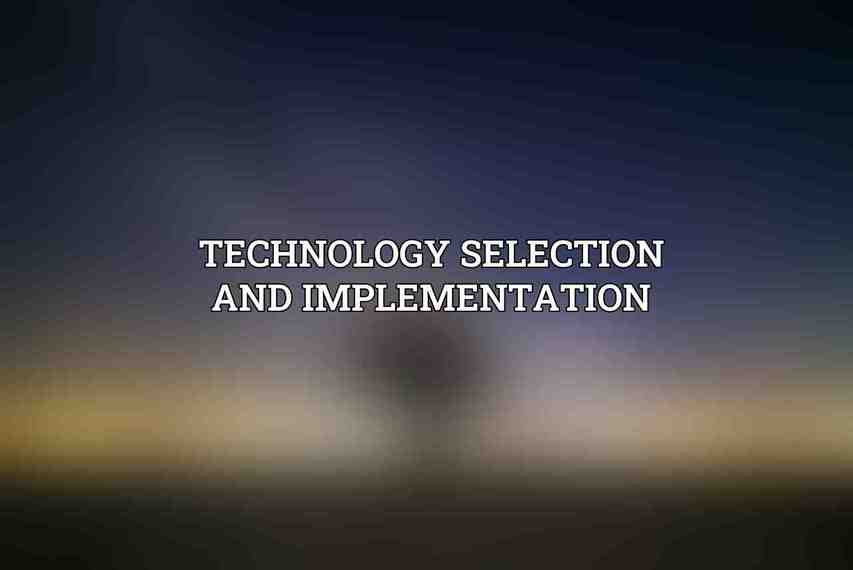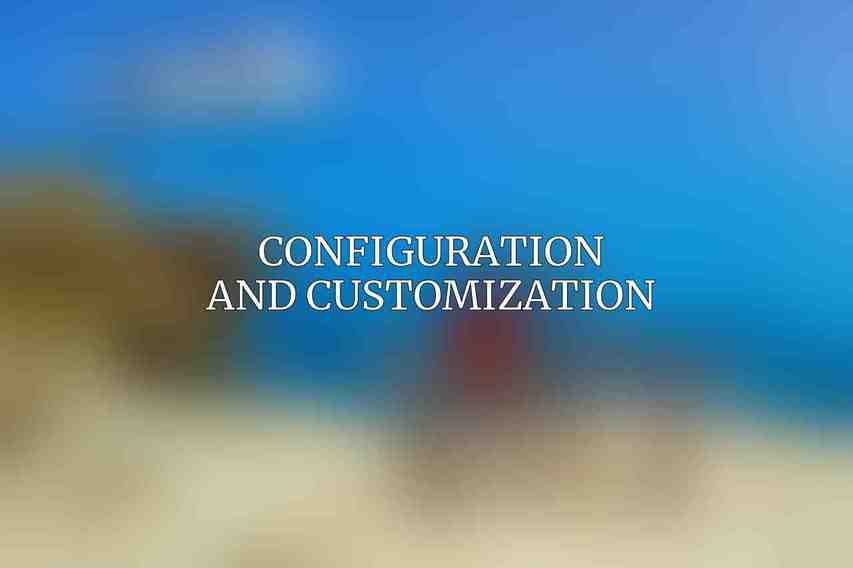the integration of licensing technologies has become a crucial aspect of streamlining operations and ensuring compliance. Licensing technology integrations refer to the incorporation of software and tools that aid in managing, monitoring, and optimizing licensing processes within an organization. By leveraging these technologies, businesses can effectively handle licensing agreements, track software usage, and enhance overall efficiency.
The benefits of integrating licensing technologies are multifaceted. Firstly, it allows for greater control and visibility over software assets, leading to improved compliance and reduced risks of non-compliance. Additionally, it enables businesses to optimize licensing costs by identifying underutilized licenses and right-sizing their software portfolios. Moreover, automation of licensing processes through technology integration can significantly enhance operational efficiency and productivity.
Planning and Assessment
Before embarking on the integration of licensing technologies, it is essential to determine business needs and objectives. This involves understanding the specific requirements of the organization in terms of software licensing, compliance, and workflow management. By aligning the integration strategy with the overarching goals of the business, companies can ensure that the technology adoption is tailored to meet their unique needs.
Next, it is crucial to evaluate existing workflow and pain points to identify areas where licensing technologies can make a significant impact. This assessment helps in pinpointing inefficiencies, bottlenecks, and compliance risks that can be addressed through technology integration. By conducting a thorough analysis of the current state of licensing processes, organizations can create a roadmap for implementation that addresses key pain points.
To proceed, it is important to identify suitable licensing technologies that align with the organization’s requirements. There are several industry-leading solutions available for licensing technology integration, each offering unique features and functionalities. Conducting market research, engaging with vendors, and seeking recommendations from industry experts can assist in selecting the most appropriate technology for the business.
Technology Selection and Implementation

When it comes to comparison of different licensing technologies, several key players stand out in the market:
| Licensing Technology | Description |
|---|---|
| Licensable | Cloud-based platform for managing software licensing and compliance. Licensable |
| Flexera | Comprehensive suite of software asset management tools. Flexera |
| SoftwareONE | Global provider of software solutions, including licensing optimization. SoftwareONE |
After selecting the appropriate licensing technology, the next step involves defining roles and responsibilities within the organization for the integration process. Establishing clear ownership and accountability ensures that the implementation proceeds smoothly and everyone is aware of their duties. Furthermore, establishing communication channels between stakeholders, IT teams, and vendors is paramount to facilitate seamless collaboration throughout the implementation phase. Check out our insights into Best DRM Solutions for Protecting Your Digital Content
To ensure successful adoption of the chosen technology, organizations must implement training and documentation for users and administrators. Equipping employees with the necessary skills and knowledge to leverage the new technology effectively is essential for maximizing its benefits. Additionally, providing comprehensive documentation ensures that users have access to resources for troubleshooting, best practices, and usage guidelines.
Configuration and Customization

organizations tailor the software to meet their specific business requirements. Configuring the technology involves setting up license models, user access permissions, and reporting parameters to align with the organization’s licensing needs. Customizing the workflow and automating tasks within the system helps streamline processes and reduce manual efforts.
Moreover, integrating the licensing technology with existing systems and databases is crucial for seamless data flow and interoperability. By connecting the licensing solution with other business-critical applications such as CRM systems, ERP software, and financial platforms, organizations can ensure data consistency and avoid siloed information. This integration enhances visibility and enables cross-functional collaboration within the organization.
Management and Optimization
Once the licensing technology is integrated into the workflow, organizations must focus on monitoring and tracking licensing usage. This entails keeping tabs on software utilization, license expiration dates, and compliance adherence. By proactively monitoring licensing metrics, businesses can optimize resource allocation and forecast future licensing needs accurately.
To maintain compliance with licensing agreements, it is essential to manage audit trails and compliance records effectively. Regular audits and reviews of software deployments, licenses, and usage patterns help ensure that the organization remains within the bounds of licensing agreements. By maintaining accurate records and conducting periodic compliance checks, businesses can mitigate the risks associated with non-compliance.
Furthermore, organizations should optimize processes related to licensing management for increased efficiency and cost savings. By continuously refining workflows, automating repetitive tasks, and eliminating redundancies, businesses can streamline licensing operations and reduce overhead costs. Optimization efforts should be data-driven, leveraging insights from monitoring tools and analytics to identify areas for improvement.
Security and Governance
To safeguard licensing data and ensure data integrity, organizations must implement security measures within the licensing technology. Encryption protocols, access controls, and data protection mechanisms help prevent unauthorized access and mitigate cybersecurity risks. By prioritizing data security, businesses can safeguard sensitive licensing information and maintain the confidentiality of software assets.
Establishing governance policies for licensing usage is essential for standardizing practices and ensuring consistency across the organization. By defining rules, protocols, and procedures for software deployment, license tracking, and utilization, businesses can maintain control over licensing activities and enforce compliance. Governance frameworks help mitigate risks associated with unauthorized software usage and license violations.
Ensuring compliance with licensing agreements is a critical aspect of licensing technology integration. By adhering to licensing terms and conditions, organizations avoid legal repercussions, financial penalties, and reputational damage. Regularly reviewing and updating licensing agreements, staying informed about licensing changes, and conducting internal audits are key strategies for maintaining compliance and upholding licensing obligations.
Continuous Improvement
Continuous improvement is key to maximizing the benefits of licensing technology integrations. Organizations should evaluate and refine the integration based on performance data and user feedback. By analyzing key performance indicators, identifying areas for enhancement, and implementing iterative changes, businesses can ensure that the technology integration remains aligned with evolving needs and objectives.
Furthermore, staying updated on licensing technology advancements is crucial for leveraging new features, functionalities, and security enhancements. Engaging with industry forums, attending conferences, and keeping abreast of market trends enable organizations to stay ahead of the curve and adopt innovative licensing solutions that drive business value. Continuous learning and adaptation to technological advancements ensure that businesses remain competitive in the digital world.
Seeking feedback from users, stakeholders, and IT teams is essential for identifying pain points and implementing improvements. By actively soliciting input, addressing user concerns, and incorporating suggestions for enhancement, organizations can enhance user satisfaction, increase adoption rates, and drive greater ROI from the licensing technology integration. Continuous feedback loops foster a culture of innovation and collaboration within the organization.
Case Studies and Best Practices
To provide real-world insights into the benefits of licensing technology integrations, case studies can showcase successful implementations, highlighting the challenges faced, solutions adopted, and outcomes achieved. By sharing practical examples of how licensing technologies have transformed operations, increased efficiency, and reduced costs, businesses can learn from peer experiences and apply best practices to their own integration projects.
Sharing best practices and lessons learned from licensing technology integrations can help organizations navigate implementation challenges and optimize outcomes. By disseminating knowledge, recommendations, and success stories, businesses can accelerate their integration efforts, avoid common pitfalls, and achieve maximum return on investment. Best practices encompass areas such as change management, stakeholder engagement, and post-implementation support.
Furthermore, providing industry-specific guidance on licensing technology integrations can assist organizations in tailoring their approaches to meet sector-specific requirements. Different industries have unique compliance regulations, software needs, and workflow complexities, necessitating customized integration strategies. By offering insights into industry best practices and regulations, businesses can enhance their integration success in specialized sectors.
the integration of licensing technologies into business workflows is a strategic imperative for organizations seeking to optimize software management, ensure compliance, and drive operational efficiency. By following a structured approach to planning, selecting, implementing, and optimizing licensing technologies, businesses can unlock significant benefits and value across their operations.
enhance visibility, and drive cost savings. Through effective configuration, customization, and optimization of licensing technologies, organizations can improve operational agility, reduce risks, and stay ahead of regulatory requirements. Embracing licensing technologies is not just a choice but a necessity for businesses looking to thrive in the digital age.
As technologies evolve and business worlds transform, it is crucial for organizations to stay abreast of licensing advancements and continuously seek opportunities for improvement. By fostering a culture of innovation, embracing change, and prioritizing the adoption of cutting-edge licensing technologies, businesses can future-proof their operations and capitalize on emerging opportunities. Embrace licensing technologies as a catalyst for growth, efficiency, and compliance in the ever-changing business environment. Explore further with Emerging Trends in Licensing Technologies for 2024
Frequently Asked Questions
What are licensing technologies?
Licensing technologies refer to software tools or platforms that enable businesses to manage the licensing and permissions of digital assets, such as software, images, videos, etc. These technologies help streamline the process of granting access and usage rights to customers or clients.
How can integrating licensing technologies benefit my business workflow?
Integrating licensing technologies can benefit your business by improving efficiency, ensuring compliance with licensing agreements, reducing the risk of unauthorized usage, and providing better tracking and reporting capabilities. It can also help streamline the process of managing and monetizing your digital assets.
What factors should I consider when choosing a licensing technology for my business?
When choosing a licensing technology for your business, consider factors such as ease of integration with your existing systems, scalability to accommodate future growth, security features to protect your intellectual property, customization options to meet your specific needs, and customer support services.
Can licensing technologies help me protect my intellectual property?
Yes, licensing technologies can help protect your intellectual property by providing secure mechanisms to control access and usage rights. This includes features such as encryption, authentication, and digital rights management tools that can help prevent unauthorized distribution or usage of your digital assets.
How can I successfully implement licensing technologies into my business workflow?
To successfully implement licensing technologies into your business workflow, start by evaluating your current licensing processes and identifying areas for improvement. Choose a licensing technology that aligns with your business goals and needs, and work closely with your team to ensure a smooth transition. Provide training and support for your employees to ensure they understand how to effectively use the new technology.
